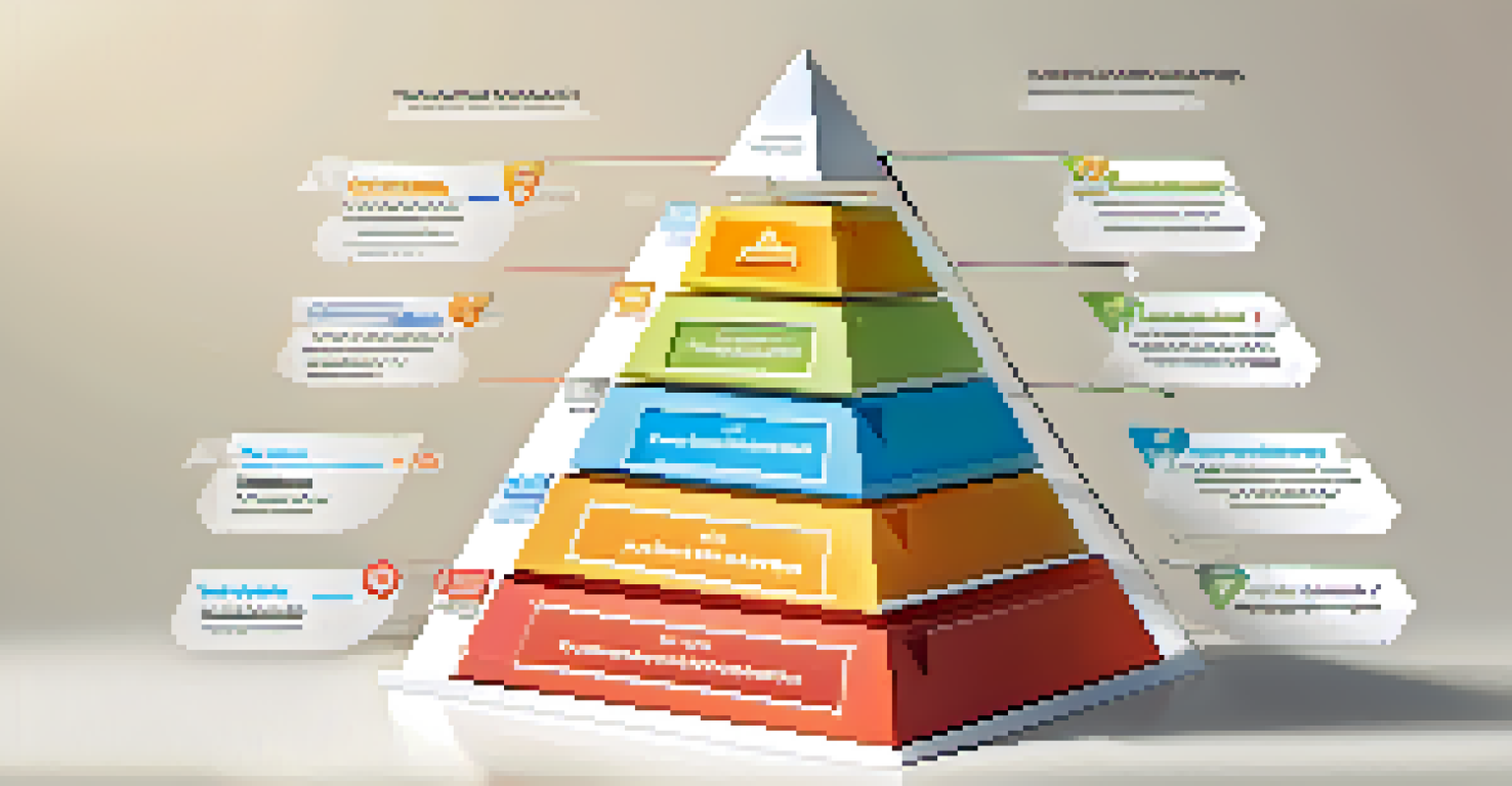The Role of Customer Feedback in Funnel Optimization

Understanding the Sales Funnel and Its Importance
The sales funnel represents the journey potential customers take from awareness to purchase. Think of it as a path where each stage helps determine how effectively you're guiding prospects towards conversion. Understanding this journey is crucial for businesses aiming to optimize their marketing strategies and boost sales.
Your most unhappy customers are your greatest source of learning.
At the top of the funnel, you have awareness, where potential customers first encounter your brand. As they move down, they engage with your content, consider your offers, and eventually make purchasing decisions. A well-optimized funnel leads to higher conversion rates, making it essential for businesses to continually refine each step.
However, even the best-designed funnels can struggle without the right insights. This is where customer feedback becomes invaluable, acting as a compass to guide you in understanding what works and what doesn’t at each stage of the funnel.
The Value of Customer Feedback in Your Strategy
Customer feedback is like gold for businesses; it provides direct insights into what your audience thinks and feels about your offerings. This feedback can come from reviews, surveys, or social media interactions, helping you understand your customers' pain points and preferences. By actively seeking this information, you gain a clearer picture of how to improve your sales funnel.

For instance, if customers consistently mention confusion during the checkout process, you can prioritize redesigning that stage for clarity. This not only improves their experience but also increases the likelihood of conversion. Listening to your customers and implementing their suggestions can foster loyalty and trust.
Sales Funnel Guides Customer Journey
The sales funnel outlines the stages potential customers go through from awareness to purchase, making it essential for businesses to optimize each step for higher conversion rates.
Moreover, customer feedback can reveal trends that might not be immediately apparent. By analyzing feedback over time, you can identify recurring issues or emerging preferences, allowing you to adapt your marketing efforts proactively.
Gathering Effective Customer Feedback
To make the most of customer feedback, you need to gather it effectively. This can be done through various methods, such as online surveys, follow-up emails, or feedback forms on your website. The key is to ask the right questions that will yield actionable insights, rather than just generic responses.
Feedback is the breakfast of champions.
Consider using open-ended questions that encourage customers to express their thoughts freely. For example, instead of asking if they liked a product, you might ask what they enjoyed most about it. This approach can uncover deeper insights that help you make informed decisions about your funnel's optimization.
Additionally, timing is crucial when collecting feedback. Sending requests shortly after a purchase or experience can capture fresh impressions, leading to more accurate and useful data.
Analyzing Customer Feedback for Insights
Once you've gathered customer feedback, the next step is analysis. Look for patterns and common themes that emerge from the data. This can involve categorizing feedback into positive, negative, and neutral responses to identify areas that need improvement.
For example, if multiple customers mention that your website is difficult to navigate, that’s a clear signal that you need to enhance the user experience. On the other hand, positive feedback can highlight what’s currently working, allowing you to reinforce those strategies.
Customer Feedback Drives Improvement
Gathering and analyzing customer feedback provides valuable insights that help businesses refine their sales funnel and enhance the overall customer experience.
Using tools like sentiment analysis can also help in quantifying feedback, providing a clearer picture of customer perceptions. This analysis becomes a foundation for making data-driven decisions in your funnel optimization efforts.
Implementing Changes Based on Customer Feedback
After analyzing customer feedback, it's time to take action. Implementing changes based on this feedback is where the real magic happens. Whether it’s tweaking your messaging, simplifying your checkout process, or enhancing customer support, these adjustments can significantly impact your sales funnel's effectiveness.
For example, if feedback indicates that customers find your product descriptions lacking, consider rewriting them to be more informative and engaging. This not only helps potential buyers but also aligns your content with their needs, increasing the likelihood of conversion.
Additionally, it’s essential to communicate any changes made as a result of feedback to your customers. This shows them that their opinions matter and encourages ongoing engagement, creating a positive feedback loop.
Monitoring the Impact of Changes on Your Funnel
Once you've implemented changes based on customer feedback, monitoring their impact is crucial. Use analytics tools to track key performance indicators (KPIs) such as conversion rates, bounce rates, and customer satisfaction scores. This data will help you assess whether the changes positively affect your sales funnel.
For instance, if you revamped your landing page based on feedback and subsequently see an increase in conversions, it’s a clear indication that you’ve hit the mark. Conversely, if the changes don’t yield the desired results, it might be time to reevaluate your approach.
Implement Changes for Better Results
Acting on customer feedback and monitoring the impact of changes ensures continuous improvement in your sales funnel and fosters customer loyalty.
Regularly monitoring the performance of your funnel ensures that you remain responsive to customer needs, maintaining a cycle of continuous improvement based on real insights.
Creating a Culture of Feedback within Your Organization
To truly leverage customer feedback for funnel optimization, it's essential to cultivate a culture of feedback within your organization. This means encouraging all team members, from marketing to sales, to value and seek input from customers regularly. When everyone understands the importance of feedback, it becomes a collective effort to enhance the customer experience.
Consider holding regular meetings to discuss customer insights and brainstorm ways to implement changes across the funnel. This collaborative approach can lead to innovative solutions that might not have surfaced otherwise. Plus, it reinforces the idea that customer feedback is integral to your business strategy.

Additionally, recognize and celebrate the successes that come from acting on customer feedback. Sharing these wins not only motivates your team but also strengthens your commitment to customer-centric practices.